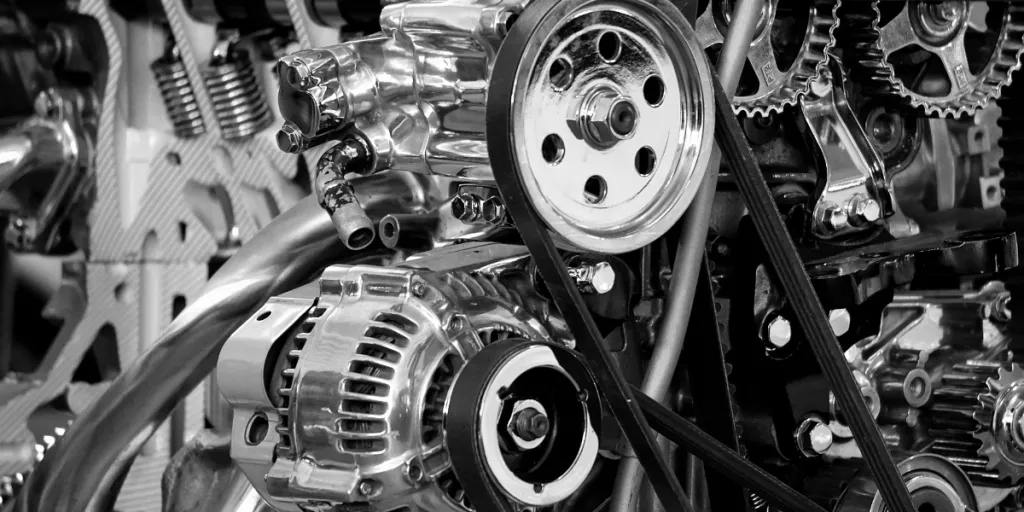Most customers prefer original equipment manufacturer (OEM) automobile parts. However, aftermarket parts have become popular due to their relatively low price and variety. As a result of these two options, many consumers get confused about which is better: Aftermarket parts or OEM parts?
This article will discuss why aftermarket parts are a great alternative to OEM parts, and it will explain the key differences to help businesses choose the best automobile parts for their budgets and needs.
Table of Contents
An overview of the aftermarket parts industry
What are aftermarket and OEM auto parts?
Advantages and disadvantages of aftermarket parts
OEM parts’ advantages and disadvantages
Aftermarket vs. OEM: why auto repair shops prefer the aftermarket
In closing
An overview of the aftermarket parts industry
According to reports, the global automotive aftermarket business had an estimated value of USD 427.51 billion in 2022 and is expected to grow at a 4.0% compound annual growth rate (CAGR) between 2023 and 2030.
The pandemic dampened demand and supply in the automotive aftermarket industry, thus leading to a market decline. Moreover, uncertainties caused by the pandemic have changed the way consumers purchase products.
Due to financial circumstances, consumers use their vehicles longer or opt for fairly new ones due to their lower prices. Fortunately, consumers purchasing used cars are set to fuel demand for aftermarket parts, propelling the market growth.
Based on distribution channels, the retail sector witnessed the highest percentage revenue of 56.0% in 2022 and is anticipated to lead the market by 2030. However, the wholesale and distribution see segment is foreseen to expand rapidly from 2023 to 2030.
For certification insights, the genuine parts sector dominated the market in 2022 with a share of 51.8% and is set to remain the largest by 2030. Yet, the uncertified segment, primarily consisting of illegal counterfeit components, is predicted to experience massive growth during the forecast period.
By regional distribution, Asia Pacific led the market with a share of 28.5% in 2022. The region is set to experience notable expansion from 2023 to 2030 as automobile sales and vehicle production increases. In addition, advancements in technology and digitization of delivery services are significantly impacting the market in the region.
What are aftermarket and OEM auto parts?
Original equipment manufacturer (OEM) parts are automobile parts produced specifically for a vehicle by the vehicle’s manufacturing company. Manufacturers typically sell these parts through verified dealers or service facilities.
On the other hand, aftermarket parts are those produced by any manufacturer besides the vehicle’s original makers. These parts are usually not tailor-made for a car but are still designed to work and fit similarly to OEM parts.
Advantages and disadvantages of aftermarket parts
Pros
Original equipment manufacturers tend to cost more because of their high production costs. However, aftermarket parts offer similar functionality at a much lower price, making them an excellent choice for businesses on a budget.
Moreover, many manufacturers create aftermarket parts. This means that businesses have numerous options that cater to their vehicle’s needs. It allows drivers to get what they need by comparing and contrasting various parts.
What’s worth noting is that some automobile parts producers will make higher-performing replacement parts than their OEM counterparts to stand out in the aftermarket industry. This is especially true for components like brake pads and car suspension, and. car owners can leverage this advantage to achieve excellent vehicle performance.
Subsequently, most original equipment manufacturers only produce parts for a vehicle model once it’s updated. As a result, owners of less common vehicles may find it challenging to purchase components due to geographical or other restraints. In this case, aftermarket parts are convenient because they are simultaneously widely available for several vehicles.
Cons
Different brands make and sell aftermarket components, making distinguishing between good and bad quality difficult. Low-quality parts will not perform as well as OEM parts and are more susceptible to failure or damage.
Although aftermarket components are tailored to fit a wide range of vehicles, it is still possible for businesses to buy parts that are incompatible with their cars due to little design differences. As a result, these parts may not operate properly and might need extra modification or upgrade, costing more time and money.
In addition, aftermarket parts don’t come with a warranty. Therefore, consumers may have to bear all the costs of repairs and adjustments caused by the aftermarket component they purchased.
Finally, although more options make it easier for businesses to find specific car parts, it can also be daunting, especially if the aftermarket brands are unfamiliar. Consumers are advised to do proper research and perhaps consult an expert before deciding on a part.
OEM parts’ advantages and disadvantages
Pros
OEM parts are often high quality as the original vehicle manufacturers are certified and trusted dealers. Moreover, compatibility is rarely an issue since the original makers know exactly what the car needs. Therefore, it’s usually safer and more dependable for car owners to purchase OEM parts to have peace of mind.
Furthermore, OEM parts have a warranty, as opposed to aftermarket parts. As a result, consumers can rest assured that they won’t have to foot the entire bill for sudden mishaps or failures. Plus, OEM manufacturers are more likely to follow safety regulations ensuring that they offer the best steering and braking systems for a given vehicle.
Cons
Original equipment manufacturers incur a lot of cost during production because their components are vehicle specific. This makes their automobile parts more costly and less budget-friendly. As a result, consumers with limited funds typically opt for cheaper options, such as aftermarket parts.
Also, since businesses can only purchase OEM components from the original manufacturer or verified dealers, accessibility and availability are usually issues. In addition, finding OEM replacement parts for old and less popular vehicles may be challenging. Hence, aftermarket parts become the go-to for most buyers.
Aftermarket vs. OEM: why auto repair shops prefer the aftermarket
Auto repair shops use aftermarket parts more these days due to their numerous benefits. Many aftermarket parts provide cheaper options without compromising quality, making them attractive to repair shops.
Moreover, these aftermarket parts are readily available and easily accessible, unlike their OEM counterparts. As a result, this slashes customers’ repair times and costs, which boosts profit in the long run.
The primary distinction between OEM and aftermarket parts is the company that manufactures them. As stated earlier, OEM parts are manufactured by the original vehicle company, while third-party companies simultaneously produce aftermarket parts for different vehicles.
Another distinguishing factor is that most OEM parts only work for the specific vehicle they are built for, while aftermarket parts can work for several cars. However, as great as this may seem, consumers who use aftermarket parts will likely encounter compatibility issues during installation and upgrades, which rarely occurs with OEM parts.
Consequently, aftermarket parts are way cheaper than their OEM counterparts. They are also easy to acquire, ensuring speedy repairs and car maintenance. OEM parts can only be purchased from the car manufacturers and a few authorized dealers. This exclusivity makes getting OEM parts hard, making them a less attractive solution.
On the plus side, OEM parts have a warranty, which means car owners can be assured of covered maintenance, as opposed to those who purchase aftermarket components.
Lastly, businesses can choose whether or not to go with aftermarket parts by considering the vehicle’s specific demands, the repair shop’s preferences, and their budget.
In closing
Businesses may find deciding between aftermarket components and original equipment manufacturer (OEM) components tricky.
Nonetheless, they can make excellent and informed selections by examining various aspects of their purchase and considering the list above.
Irrespective of preference, it’s crucial to work with respected automobile part sellers and qualified mechanics to ensure that all repairs, upgrades, and maintenance are done safely and successfully.




